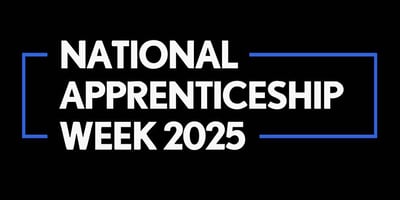Let’s be honest - traditional learning isn’t for everyone. Long commutes, rigid schedules and...
Major Changes to Level 7 Apprenticeships Announced: What Employers and Learners Need to Know
In a significant shake-up of apprenticeship funding policy, the Department for Education (DfE) has confirmed that public funding for Level 7 apprenticeships will be removed for anyone aged 22 and over from January 2026. The change means that employers will no longer be able to use their apprenticeship levy contributions to fund master's-level apprenticeships for new or existing employees over this age threshold.
This move, which the government says is part of a wider strategy to “rebalance” apprenticeship spending, is expected to make many Level 7 programmes financially unviable unless employers are prepared to cover the full cost themselves.
Who Will Still Be Eligible?
From January 2026, only apprentices aged 21 and under will remain eligible for publicly funded Level 7 apprenticeships through the apprenticeship levy. This exemption was introduced following internal ministerial negotiations, and was first revealed in a leaked letter from education secretary Bridget Phillipson to Cabinet Office minister Pat McFadden.
Why the Change?
According to the DfE, the reform is intended to redirect funding towards lower-level apprenticeships, where the impact is seen as more significant, particularly for younger people starting their careers. The government claims this shift will better support the wider skills agenda, including boosting opportunities in priority sectors and reducing dependency on migration.
Impact on Popular Level 7 Apprenticeships
The changes are likely to dramatically reduce the number of viable Level 7 programmes. FE Week’s analysis of 2023-24 apprenticeship data revealed:
-
Just 2% of Level 7 apprenticeship starts were by under-19s.
-
Only 34% were by learners aged 19 to 24.
-
The majority of Level 7 apprenticeships are taken by those aged 25 and over, who will lose levy funding access from January 2026.
Some of the most affected standards include:
-
Senior Leader (popular in the NHS, education, and civil service)
-
Digital and Technology Solutions Specialist
-
Chartered Town Planner
-
Architect
-
AI Specialist
-
Senior People Professional
Only a few standards, such as the Solicitor and Accountancy and Tax Professional apprenticeships, have a significant number of younger learners and are likely to remain viable under the new rules.
What Will It Cost?
The DfE has not confirmed how much will be saved through the funding cut. In 2023-24, just under £240 million was spent on Level 7 apprenticeships. Employers who wish to continue offering these programmes to staff over 21 will need to self-fund them going forward.
A Record Apprenticeship Budget—But a New Direction
Despite the Level 7 funding cut, the government is increasing overall investment in apprenticeships. The DfE has announced a record £3.075 billion apprenticeship budget for 2025-26, a 13% increase from the previous year. The rise is the largest since the apprenticeship levy was introduced in 2017.
However, much of this funding will now focus on:
-
Foundation apprenticeships for young people aged 16-21 (or up to 24 for certain groups)
-
Skills bootcamps in priority sectors
-
Construction training, supported by a £600 million sector deal
-
Domestic training places funded by a hike in the Immigration Skills Charge
Foundation Apprenticeships and Shortened Programmes
The DfE is also launching new foundation apprenticeships, targeting 16- to 21-year-olds. These programmes will be shorter, with minimum durations reduced from 12 to 8 months, and are designed to offer an accessible entry point into key industries. Seven pathways have been approved so far, with training set to begin this August.
Final Thoughts
The government’s decision to cut funding for most adult Level 7 apprenticeships marks a pivotal moment in the evolution of the apprenticeship system in England. While the aim is to refocus investment on younger learners and lower-level qualifications, many employers—particularly in sectors reliant on highly qualified professionals—may now face tough decisions about how to continue developing their workforce.
As this policy takes effect, it will be crucial for both employers and providers to reassess their training strategies, explore alternative funding options, and ensure they are prepared for a transformed apprenticeship landscape from 2026.



